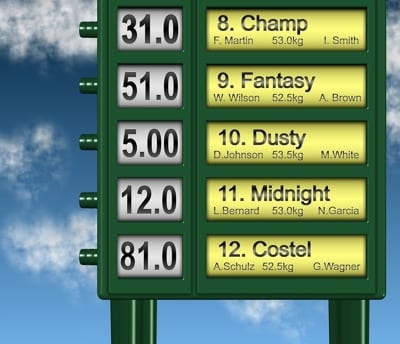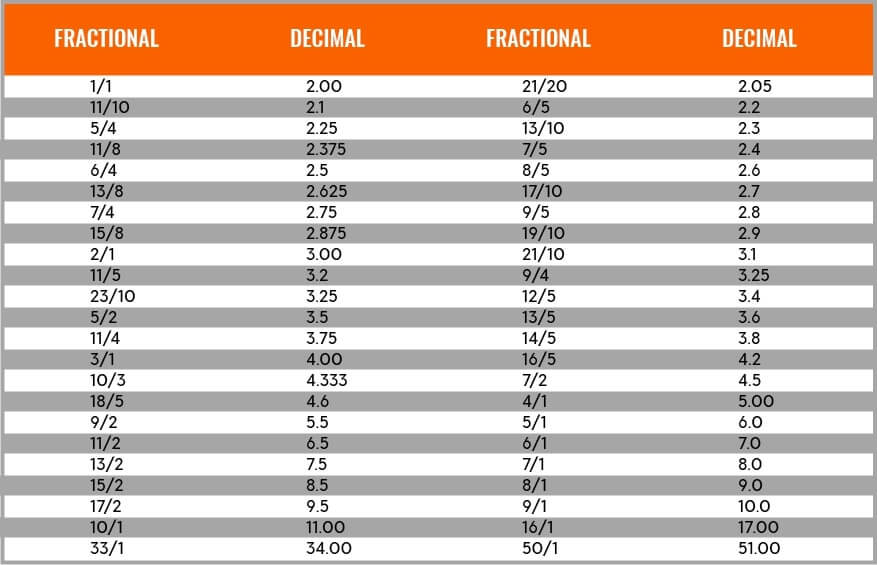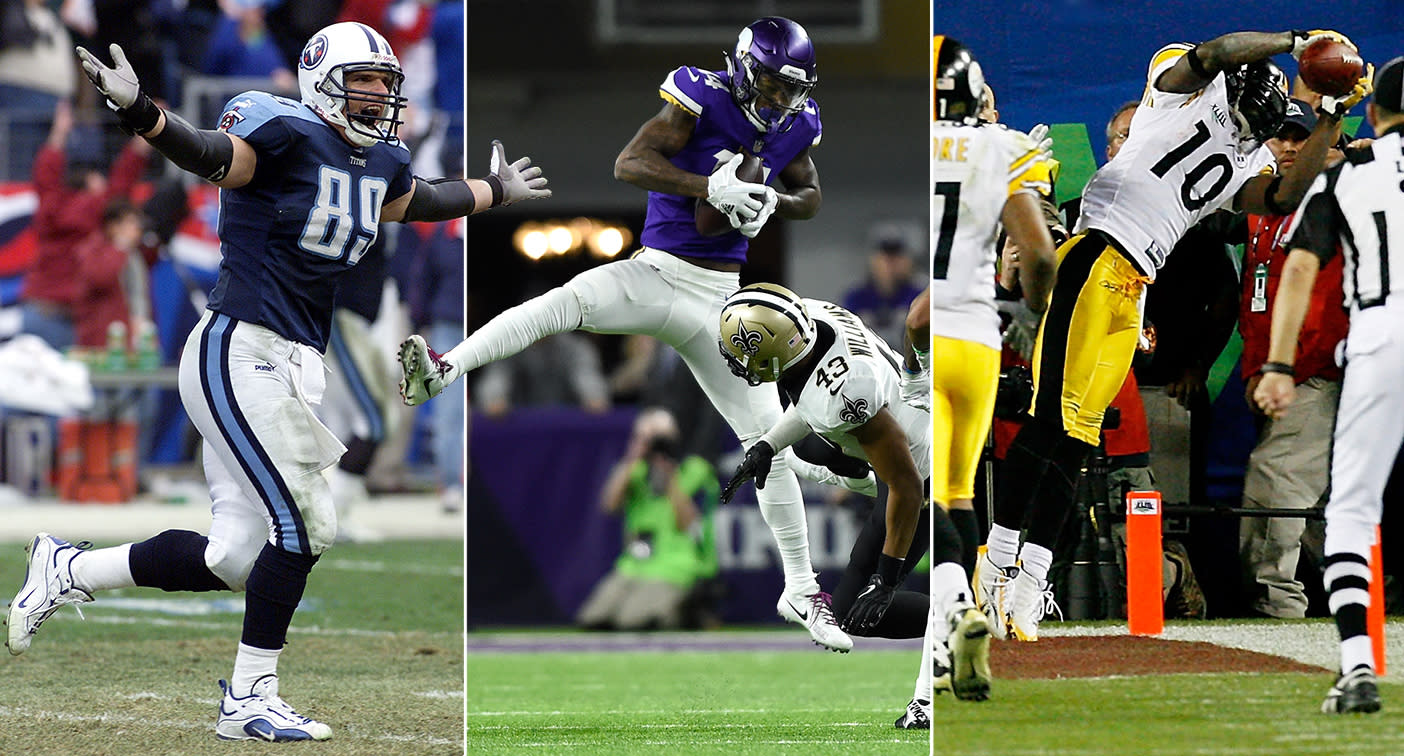Betting Odds Explained 10 11
Odds change for a couple of reasons, but, once again you need to understand how sportsbooks make money. Essentially a sportsbook looks to have an equal amount of risk bet on all outcomes of the wager. That is the ideal result for them. To ensure this, they adjust the odds to make a bet more attractive to the side with fewer bets.
Let’s take our example of coin flipping again, to keep things simple. Let’s also assume we have 5 bettors all looking to bet $100.
| Heads Odds | Tails Odds | Heads Wins | Tails Wins |
|---|---|---|---|
| Bet 1 | -110 | -$91.92 | $100.00 |
- Today, I will be tackling yet another very important topic for you. That is eSports betting odds. Now, why is it that important of a topic you say? Betting odds are what separates between you.
- Sports betting odds and lines explained for novice sports handicappers.
If we look at “Bet 1” (below), the first bettor risks $100 on Heads for a chance to win $91.92. From the sportsbook’s point of view they are at risk of losing $91.92 on a Heads win, or retaining $100 on a tails win. Not ideal for a sportsbook since they look expect to make money on every event.
| Heads Odds | Tails Odds | Heads Wins | Tails Wins |
|---|---|---|---|
| Bet 1 | -110 | -$91.92 | $100.00 |
| Bet 2 | -110 | $9.08 | $9.08 |
USA Sports Betting Odds. Find out how to read sports betting odds, calculating odds and everything you need to know about popular betting odds.
When Bet 2 is placed on Tails, the sportsbook gets an ideal outcome: no matter who wins, the book pays out $91.92 using the losers money, and retains $9.08 itself.

| Heads Odds | Tails Odds | Heads Wins | Tails Wins |
|---|---|---|---|
| Bet 1 | -110 | -$91.92 | $100.00 |
| Bet 2 | -110 | $9.08 | $9.08 |
| Bet 3 | -110 | $108.08 | -$83.84 |

When Bet 3 is placed the sportsbook will likely not make an odds change to the -110, and they will still be available. By choosing Tails again, the risk to the sportsbook is again in the red. If heads wins, the book will have only one bettor to pay, but 2 losers and therefore would win $108.08. if Tails wins they are at risk $83.84. Definitely not what the sportsbook wants, but you’ll notice that the the overall risk is going down versus after Bet 1.
| Heads Odds | Tails Odds | Heads Wins | Tails Wins |
|---|---|---|---|
| Bet 1 | -110 | -$91.92 | $100.00 |
| Bet 2 | -110 | $9.08 | $9.08 |
| Bet 3 | -110 | $108.08 | -$83.84 |
| Bet 4 | -110 | $208.08 | -$175.76 |

Bet 4 is where the sportsbook would get concerned. A third Tails bettor means they could potentially lose $175.76. Remember that the sportsbook isn’t gambling. They are expected to make money. That is why they would look to make an odds change to try to even out their risk.
| Heads Odds | Tails Odds | Heads Wins | Tails Wins |
|---|---|---|---|
| Bet 1 | -110 | -$91.92 | $100.00 |
| Bet 2 | -110 | $9.08 | $9.08 |
| Bet 3 | -110 | $108.08 | -$83.84 |
| Bet 4 | -110 | $208.08 | -$175.76 |
| Bet 5 | +180 | $28.08 | -$75.76 |
To do this the sportsbook releases a line that is favorable to Heads, in this case, around +180. That means that a $100 bet on heads pays $180. On coin flipping, take those odds all day! For the book, that means that if Heads wins, they still have $28.08 profit and if Tails wins, the risk, though still negative is a lower -$75.76.
Betting Odds Explained 10 11 Odds
You can see that as this trend continues, eventually the sportsbook takes no risk and takes profit regardless of the result.
What Are 11/10 Odds
Something to keep in mind about this example is that it is unusual to see lines move with only a small number of bettors or dollars, but you can see that after thousands of people bet on a single event eventually profit is guaranteed and predictable.

Betting odds come in a variety of different formats and the one most commonly used varies according to what part of the world you happen to be in. Here we explain the difference between fractional betting odds, mainly used in the UK, decimal, used in Europe and Australia, and American odds, used… well, have a guess.
Fractional Betting Odds
Until betting exchanges started using decimal odds fractional odds were the only type ever seen and used in the UK. For example, in a snooker match where both players are evenly fancied the odds would be 10/11 on each player. This means that for each £11 you bet you would get £10 winnings plus your stake of £11 for a total return of £21. Where the profit is less than your stake (in simple terms, the number on the left is smaller than the one on the right) this is “odds-on” and can be expressed as “10 to 11” or “11 to 10 on” – both mean the same thing.
If one snooker player is a big favourite they may be priced at 1/6 (also called 6/1 on), meaning a bet of £6 makes £1 profit, whilst the outsider may be 4/1, meaning a bet of £1 makes a profit of £4 plus your stake back for a return of £5.
Decimal Betting Odds
With decimal odds the prices are quoted to include your stake back, so the number given is your total return, not the profit and is expressed as a decimal, not a fraction. This is calculated by turning the fractional odds to decimal and adding on one (the one being your stake). So 10/11 is 10 divided by 11 plus one – or 1.909. Thus, if you bet £1, you get £1.91 back.
For the big favourite at 1/6, your decimal odds are: one, divided by six, then plus one, so 1.17 (the exact price can vary very slightly depending on if the bookie rounds the price up or down and how many decimal places they use). Similarly for the outsider the price would be four divided by one, plus one – so 5.00. Converting fractional to decimal when the original is “to one” – e.g. 4/1 or 8/1 or 100/1 – is very easy because you just add one on. So 100/1 is 101 in decimal odds.
American Betting Odds
American odds start with either a + or a – sign. The former means that is what you would win (profit) from a $100 stake, whereas the latter shows how much you would have to stake to win $100.
So, in our examples, 10/11 is the same as 1.91 is the same as -110 (so betting $110 will give a profit of $100), whilst 1/6 is the same as 1.17 is the same as -600. Our snooker outsider is 4/1, thus 5.00 in decimal and +400 in American odds.
The fractional odds of 1/1 are called “evens” in the UK, often “even money” in the US and are expressed as +100 in American odds (and 2.00 in decimal).